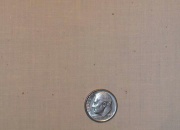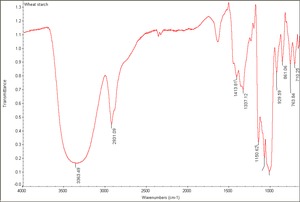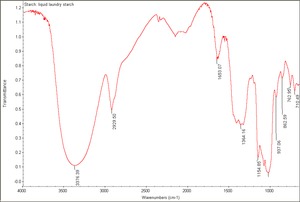Difference between revisions of "Starch"
(No difference)
| |
Latest revision as of 15:08, 4 June 2022
Description
Carbohydrate granules of varying size obtained from roots, bulbs and seeds of most plants. Starch is primarily obtained from Rice, Wheat, Corn, potatoes, cassava (tapioca), Sago, and arrowroot. The white, powdery granules range in size from 3-150 micrometers. Starch is a mixture of the soluble straight-chain amylose molecules and the insoluble, branched-chain amylopectin molecules. When starch is heated, the granules swell and form a thick, tacky jelly upon cooling. Starchy adhesives have been used since at least 3500 BCE in Egypt. More recently starch has been used for sizing fabric, canvas, and paper. It has also been used as an adhesive for paper cartons, bottle labels, gummed tape and envelopes. Starch is sensitive to moisture and biodegradation. Paste films become brittle with age. Dextrin is prepared from starch by baking it at 200-250 C until the material becomes completely soluble in cool water. Soluble starch can also be made by hydrolyzing the granules with dilute hydrochloric acid followed by neutralization with an alkali. Soluble starch has been used for priming canvas and as a binder in watercolor paints.
Synonyms and Related Terms
fecula; amylum Lat.); Stärke (Deut.); almidón (Esp.); amidon (Fr.); amido (It., Port.); zetmeel (Ned.); stive (Nor.); skrobia (Pol.); stärkelse (Sven.)
Applications
- Hinging
- Gluing
- Adhering paper-based products
Risks
- Used as an antidote for iodine poisoning.
- Becomes brittle with age.
- Susceptible to biodeterioration.
Physical and Chemical Properties
- Swells but does not dissolve in cold water.
- Granule size varies with starch type from 3 - 150 micrometers.
- The amylose component turns blue with Iodine and the amylopectin component turns violet with iodine.
- Reacts with a iodine/potassium iodide solution to give a positive purple color
- Stains with Methylene blue.
- Composition = (C6H10O5)x
- Density = 0.499-0.513 g/ml
| Starch type | Barley | Maize | Potato | Rice | Rye | Sago | Tapioca | Wheat |
|---|---|---|---|---|---|---|---|---|
| Shape | lenticular | polygonal | oval | polygonal | lenticular | oval | truncated | lenticular |
| Size (um) | 2-3, 35-40 | 5-30 | 30-100 | 3-8 | Rye | 20-65 | 3-28 | 3-8,15-35 |
| Comments | bimodal sizes | centric hilum | off center hilum | spherical | bimodal sizes | off-center hilum | centric hilum | bimodal sizes |
Additional Images
For more information on the use a starches in conservation, please see
- AIC Book and Paper Catalog "Adhesives for Paper: Starches"
Resources and Citations
- G.S.Brady, Materials Handbook, McGraw-Hill Book Co., New York, 1971 Comment: p. 766
- The Merck Index, Martha Windholz (ed.), Merck Research Labs, Rahway NJ, 10th edition, 1983 Comment: entry 8954
- Encyclopedia Britannica, http://www.britannica.com Comment: "Starch." (Accessed 14 Apr. 2004).
- S.R.Trotman, E.R. Trotman, Textile Analysis, J.B. Lippincott Company, Philadelphia, 1932
- Rosalie Rosso King, Textile Identification, Conservation, and Preservation, Noyes Publications, Park Ridge, NJ, 1985
- Matt Roberts, Don Etherington, Bookbinding and the Conservation of Books: a Dictionary of Descriptive Terminology, U.S. Government Printing Office, Washington DC, 1982
- E.J.LaBarre, Dictionary and Encyclopedia of Paper and Paper-making, Swets & Zeitlinger, Amsterdam, 1969
- Hermann Kuhn, Conservation and Restoration of Works of Art and Antiquities, Butterworths, London, 1986
- Boise Cascade Paper Group, The Paper Handbook, Boise Cascade, Portland OR, 1989
- CRC Handbook of Chemistry and Physics, Robert Weast (ed.), CRC Press, Boca Raton, Florida, v. 61, 1980
- Book and Paper Group, Paper Conservation Catalog, AIC, 1984, 1989
- Art and Architecture Thesaurus Online, http://www.getty.edu/research/tools/vocabulary/aat/, J. Paul Getty Trust, Los Angeles, 2000






